Overview
A safe working environment requires the evaluation and careful consideration of both general exhaust ventilation requirements and localized capture and control requirements for a chemical processing area or building. A combination of general area exhaust systems, point source capture and control systems, and emergency release capture and control systems are required to ensure that hazards are minimized. A systematic approach can be used to determine potential requirements for exhaust ventilation in your processing area or building. The approach includes review of applicable standards such as the International Building Code (IBC), International Fire Code (IFC), and International Mechanical Code (IMC) as well as the National Fire Protection Association (NFPA) standards.
Approach
The systematic approach would involve the following:
- Documenting the hazards of all chemicals handled in the area
- Determining for each chemical the maximum quantity stored and/or used
- Evaluating general exhaust requirements that may apply to the processing area
- Determining if more stringent general exhaust requirements may apply to specific hazardous materials
- Determining if localized point source capture/control requirements may apply for highly hazardous chemicals
- Determine if there are any special requirements (e.g. compressed gases, emergency release, spill) that may apply.
Chemical Hazards
Understanding the physical and health hazards of the chemicals you handle in the area is paramount to completing a good technical review of ventilation requirements. Therefore, material safety data sheets (MSDS’s), NFPA 704, and other sources must be used to define such things as the corrosivity, flammability (e.g. flash point and lower explosive limit LEL), and toxicity (median lethal dose (LD50) and median lethal concentration (LC50)) of the chemicals. In addition, understanding (both qualitatively and quantitatively) whether or not a chemical can be present in the area as a vapor, gas, fume, mist or dust during any part of the operation is also important. The basis for the hazards and any assumed concentration should be well documented.
Maximum Quantities
Specific, more stringent requirements will apply to areas where hazardous chemicals are stored and used in amounts that exceed the Maximum Allowable Quantity (MAQ) per control area (as defined in both Chapter 3 of the IBC and Chapter 50 of the IFC). For example, the MAQ/control area for the storage of a corrosive liquid is 500 gallons. If a corrosive liquid is stored above this quantity, more stringent ventilation requirements may apply. The MAQ/control area for each hazardous chemical needs to be carefully defined.
General Exhaust Requirements
Regardless of the quantity of a hazardous chemical handled in the area, the codes require that general exhaust systems be provided, maintained and operated to make sure any fumes/mists/vapors/dusts that may present a physical and/or health hazard are discharged outdoors with no chance of re-entering through the building ventilation system. Some examples of general exhaust requirements provided in Chapters 4 and 5 of the IMC include the following:
- If natural ventilation is used, ensure a minimum of 4 percent of the floor area is openable to the outdoors.
- Provide adequate makeup air and maintain a neutral or negative air pressure throughout the area
- Locate inlets to the exhaust systems at areas of heaviest contamination.
Other physical design requirements are provided in these Chapters.
General Exhaust Requirements for Hazardous Materials
Additional requirements exist in areas where hazardous materials are stored or dispensed and used in amounts greater than the MAQ per control area. Using the same example above, if a corrosive liquid is stored, used or dispensed in a quantity greater than 500 gallons, the mechanical exhaust system for the area will also have to meet additional requirements including:
- Design capacity for 1 cfm/ft21 cfm/ft2 of floor area over storage or use area.
- Operate continuously.
- Equip with a manual shutoff switch, labeled and located outside the room adjacent to the access door.
- If the vapor density is greater than air, the exhaust vents should be located no more than 12 inches off the floor (for chemicals lighter than air, exhaust from a point within 12 inches of the highest point of the room).
- Design to provide air movement across all portions of the floor (no dead spaces) and allow no recirculation of exhausted air back into the room.
Localized Exhaust Requirements
Ventilation may need to be expanded to include localized point source capture and exhaust if more hazardous conditions can potentially exist, some of which include the following:
- A hazardous chemical with an NFPA health hazard rating of 3 or 4 is used in amounts exceeding the MAQ per control area.
- A “corrosive” material is dispensed and/or used in amounts exceeding the MAQ per control area
- A highly-toxic or toxic liquid is dispensed and/or used in amounts exceeding the MAQ per control area
As an example, if a Chlorine solution (corrosive, NFPA 4 rating) is pumped to a tank that has an open vent, a localized point source capture and exhaust system may need to be designed around that vent.
Hazardous Materials-Specific Requirements
Once general exhaust and localized exhaust requirements are defined, additional requirements should be identified for specific hazardous materials conditions; for instance, the potential for a spill or accidental release of a highly toxic chemical. It is important to define the potential worst-case spill or accidental release scenarios and to estimate the concentration of harmful fumes that could be generated and emitted. The mechanical exhaust system may need to be equipped with a scrubber system to process these vapors (if the concentration is potentially harmful). There are other requirements for specific hazardous materials, such as those for storage or use of highly-toxic and toxic compressed gases, or flammable and combustible liquids, which would be considered, as relevant. These are well-defined in the standards referenced.
Conclusion
A good ventilation review requires a thorough understanding of the chemicals in the area, how they are stored and used, and their potential hazards. With that information, a systematic technical review can be implemented to summarize the ventilation requirements for your processing area.

